Enterprise
Planet, Class-P
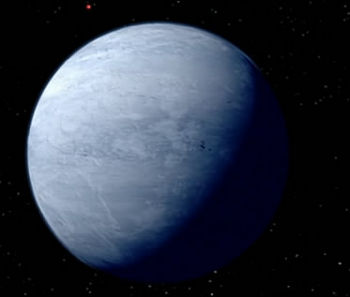
Exo III (TOS-09)
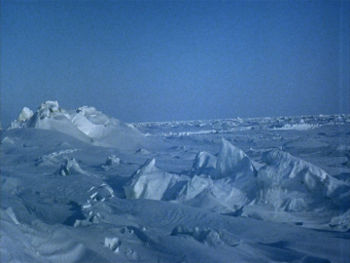
Exo III Surface (TOS-09)
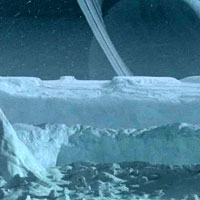
Andoria Surface (ENT-90)
Glaciated. Age ranged from 3-10 billion years. Diameter was 10,000 to 15,000 km. Typically located in the Ecosphere of a planetary system. Water ice covered 80% or more of the surface area, atmosphere consisted of nitrogen, oxygen, and trace elements. May have contained hardy vegetation, animal life, and possibly humanoids.[1]
Class-P Planets:
References
Planet, Class-O
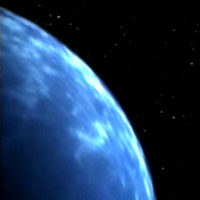
Pacifica (TNG-145)

Class-O Planet (ENT-56)
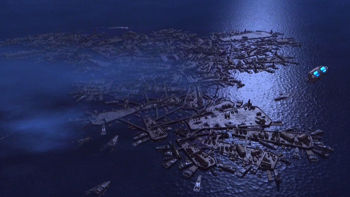
Class-O Planet Surface (ENT-56)
Pelagic. Age ranged from 3-10 billion years. Diameter was 10,000 to 15,000 km. Typically located in the Ecosphere of a planetary system. Liquid water covered 80% or more of the surface area, atmosphere consisted of nitrogen, oxygen, and trace elements. May have contained aquatic vegetation, animal life, and possibly humanoids.[1]
References
- 1. Star Trek: Star Charts. Book. 2002. Pocket Books.
Planet, Class-M

Earth (ENT-78)
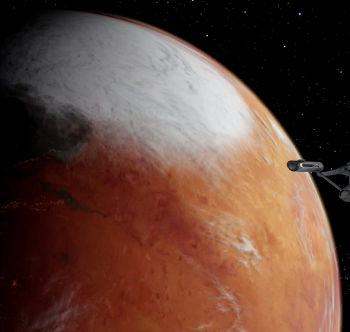
Vulcan (TOS-34)
Terrestrial. Age ranged from 3-10 billion years. Diameter was 10,000 to 15,000 km. Typically located in the Ecosphere of a planetary system. Surface water was abundant; if water or ice covered more than 80% of the surface, the planet was considered Class O or Class P. Atmosphere was primarily primarily nitrogen, oxygen, and trace elements. Contained extensive vegitation and animal life.[8] Capable of supporting carbon-based, humanoid life.[1]
The designation apparently stemmed from the Vulcan word “Minshara,” which was used to designate planets capable of supporting life.[7] Class-M planets could vary widely in color, cloud cover, and overall appearance. Most Class-M planets were characterized by a relatively thin, tectonically active crust floating on a molten rock mantle, which in turn surrounded a liquid metal outer core and a solid inner core composed of metal crystals.
› Continue reading
Planet, Class-K
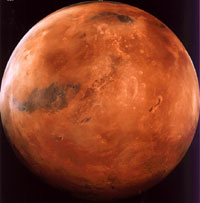
Mars (STSC)

Mudd (TOS-41)
Adaptable. Age ranged from 4-10 billion years. Diameter was 5000 to 10,000 km. Typically located in the Ecosphere of a planetary system. Surface was barren, with little or no surface water, atmosphere was thin and mostly carbon dioxide. Adaptable for humanoid colonization through the use of pressure domes and terraforming. May contain primitive single-celled organisms.[1]
Class-K Planets:
References
Planet, Class-J
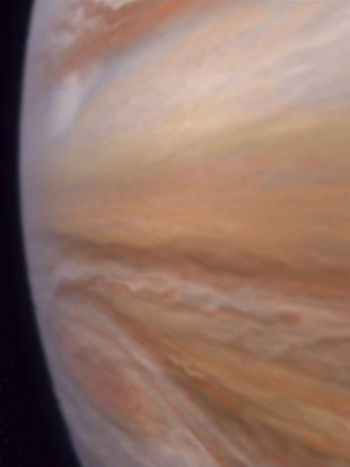
Jupiter (ENT-50)
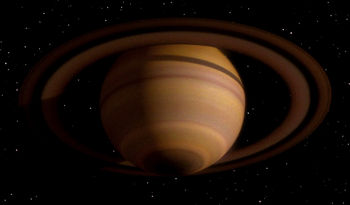
Saturn (TNG-101-102)
Gas giant. Age ranges from 2-10 billion years. Diameter is 50,000 to 140,000 km. Typically located in the Cold Zone of a planetary system. Surface radiates some heat and is tenuous and comprised of gaseous hydrogen and hydrogen compounds, atmospheric zones vary in temperature, pressure and composition. May contain hydrocarbon-based life forms.[1]
References
- 1. Star Trek Star Charts. Book. Pocket Books. October 2002.
Planet, Class-I
Gas Supergiant. Age ranged from 2-10 billion years. Diameter was 140,000 to 10 million km. Typically located in the Cold Zone of a planetary system. Surface radiated heat and was tenuous and comprised of gaseous hydrogen and hydrogen compounds, atmospheric zones varied in temperature, pressure and composition, and water vapor may have been present. No known native life forms.[1]
Class-I Planets:
References
Planet, Class-D
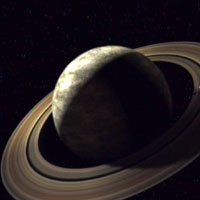
Class-D Planet (VOY-109)
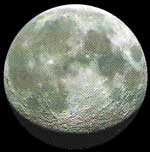
Moon (STSC)
Asteroid/Moon. Age ranged from 2-10 billion years. Diameter was 100 to 1000 km. Typically located in the Hot Zone, Ecosphere or Cold Zone of a planetary system, primarily in orbit of larger planets or in asteroid belts. Surface was barren and cratered, atmosphere was nonexistent or extremely tenuous. No native life forms.[1]
Class-D Planets:
References
Cheron
Site of a battle with the United Federation of Planets in the Omicron Gruis System,[3] which was considered a “humiliating” defeat by the Romulans, according to Admiral Jarok. It led to the creation of the Neutral Zone and thus likely the climax of the Romulan War in 2161.[2] By coincidence, it was also the name of a long-dead world where a group of two advanced races destroyed each other over racial bigotry, not encountered by the UFP until 2268.[1]
References
- 1. “Let That Be Your Last Battlefield.” Star Trek, Episode 70. Television. 10 January 1968.
- 2. “The Defector.” Star Trek: The Next Generation, Episode 158. Television. 1 January 1990.
- 3. Star Trek: Star Charts. Book. October 2002. Pocket Books.
Ceti Alpha V
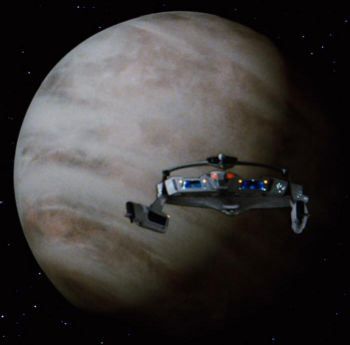
Ceti Alpha V (ST-02)

Ceti Alpha V (ST-02)
Planet where Khan Noonien Singh was marooned by Captain James T. Kirk in 2266.[1] Six months later, Ceti Alpha VI exploded, shifting the planet’s orbit, resulting in massive climatic change. Nearly all life on the planet was destroyed.[2]
E60 Timeline
Following the destruction of Earth by the Xindi in 2154, 6,000 Humans — the last remaining survivors of the Xindi’s genocidal purge of the species — took refuge on Ceti Alpha V, but the colony was discovered in 2165.[3]
References
- 1. “Space Seed.” Star Trek, Episode 24. Television. 16 February 1967.
- 2. Star Trek II: The Wrath of Khan. Film. 4 June 1982.
- 3. “Twilight.” Star Trek: Enterprise, Episode 60. Television. 5 November 2003.
Canamar
Enolian penal colony. Jonathan Archer and Trip Tucker found themselves mistakenly arrested and placed on a prisoner transport vessel headed for Canamar in 2152.[1]
References
Categories
- Animated Series (60)
- Articles (28)
- Books (447)
- Cast & Crew (79)
- Comics (22)
- DS9 (328)
- Early Voyages (125)
- Education (5)
- Enterprise (373)
- Excelsior (36)
- Food (19)
- Games (223)
- Klingon (70)
- Library (1,543)
- Logs (593)
- Lost Era (55)
- Medicine (18)
- Merrimac (1)
- Mirror (35)
- Miscellaneous (13)
- New Frontier (54)
- Next Generation (635)
- Original Series (681)
- Personnel (436)
- Places (369)
- Politics (12)
- Recreation (10)
- SCE (41)
- Science (1)
- Shatnerverse (9)
- Ships (455)
- Site Updates (98)
- Starfleet Academy (86)
- Stargazer (42)
- STO (61)
- Technology (45)
- Titan (59)
- To Boldly Go (1)
- TV/Film (214)
- Uncategorized (4)
- Vanguard (76)
- Voyager (236)
- Weapons (27)
- Xenology (54)